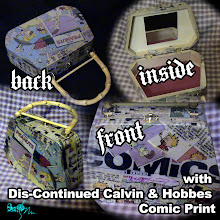
*This is General Information for Beginners to the World of V.E.
First thing you want to do is make sure you have at least 4.0GB of space available for this project.
Getting Started
Make a file destination in your system and name it (i.e. Video Project 1)
Once you have a named folder on your desktop, or anywhere in your hard drive, you are ready to begin the software process.
There are two to three industry-leading standard for video editing programs available for purchase, and for top programs, you can expect to pay top dollar. But do not be discouraged by this as you still have hundreds of more options that may be more suitable for your project.
Here are some of those options:
• Most Video hardware comes with a CD for Video to Computer transfer.
• Free DEMO programs of the top video editing programs (for limited time, but effective)
• Free Small Video Editing Program downloads from internet (i.e. www.download.com)
• your personal computer system's video editing program (i.e. Windows Moviemaker)
Final Cut Pro and Adobe Premiere are the industry standard programs, along with Avid.
Now that you have your program ready and the destination folder ready for saving, you may begin.
First thing you want to do is locate the folder where you have the video clips that you want to use, and be sure to do this from within your program. Usually this feature is found under the File Menu and it is worded in one of the following ways, "import media", "file open", "get file", or "open media". Learn the shortcuts and icons of your computer programs, as most operations have a 'one-click' button.
Once you find the button (or menu option) a browser box opens for you to locate and retrieve a directory with your files for video editing. When you find the file/folder you proceed on with the operation by clicking Ok/Open/Import/Enter. You may repeat this process until you have acquired all the clips you are working with for your Video Project (programs have a window/box displaying all imported clips to your video project.) The imported clips to the video project are the files you will be able to work with on your project.
Working on Video Project
If you have multiple clips, a sub clipping/editing feature is usually used to define what portions of the clips you will use. For example, if you have 20 seconds of one clip, but only wish to use 4 second of the clip (a specific part), then you may throw that in the timeline for chopping and with selection markers select the area you want to copy. You copy this portion to your clipboard, and select the entire clip and delete it (in timeline only). Finally paste (from clipboard memory) the portion you want into the timeline and save as desired. Now you have one piece of the entire project and piece by piece this is how video editing is done.
Some Tips
Make a separate folder in your project's main folder for all the individual clips that you snip, before making the final movie. This way, they are easy to find and do not become mixed up with the original clips that you photographed.
So by now you have found the files you want to work with, edited them for smoother editing and have inserted them into the timeline in proper order, with some effects and transitions.
Now that you have this timeline ready to go with some nice audio in the audio tracks, you are ready to make a movie.
Programs usually allow you to save to any directory. Saving files is usually worded in one of the following ways, "export movie", "save timeline as", "export timeline", "save media as", etc.
Do no be confused by the saving menu options. Some are to save your 'project', and not to make an actual video/movie. This option is given for saving projects that cannot be completed in just one day; all files for project are saved in a folder for later retrieval.
Finally, once you are ready to save the final edited timeline, you may save in many formats like MPEG4, AVI, etc. Depending on the program, some save features will actually tell you how big the file will be.
Later you can take your saved movie file and drop it into any DVD- making program.
*some video editing programs also have this option.




































